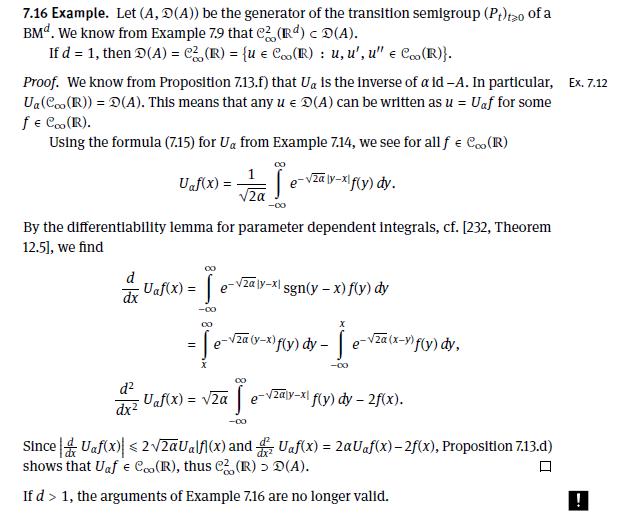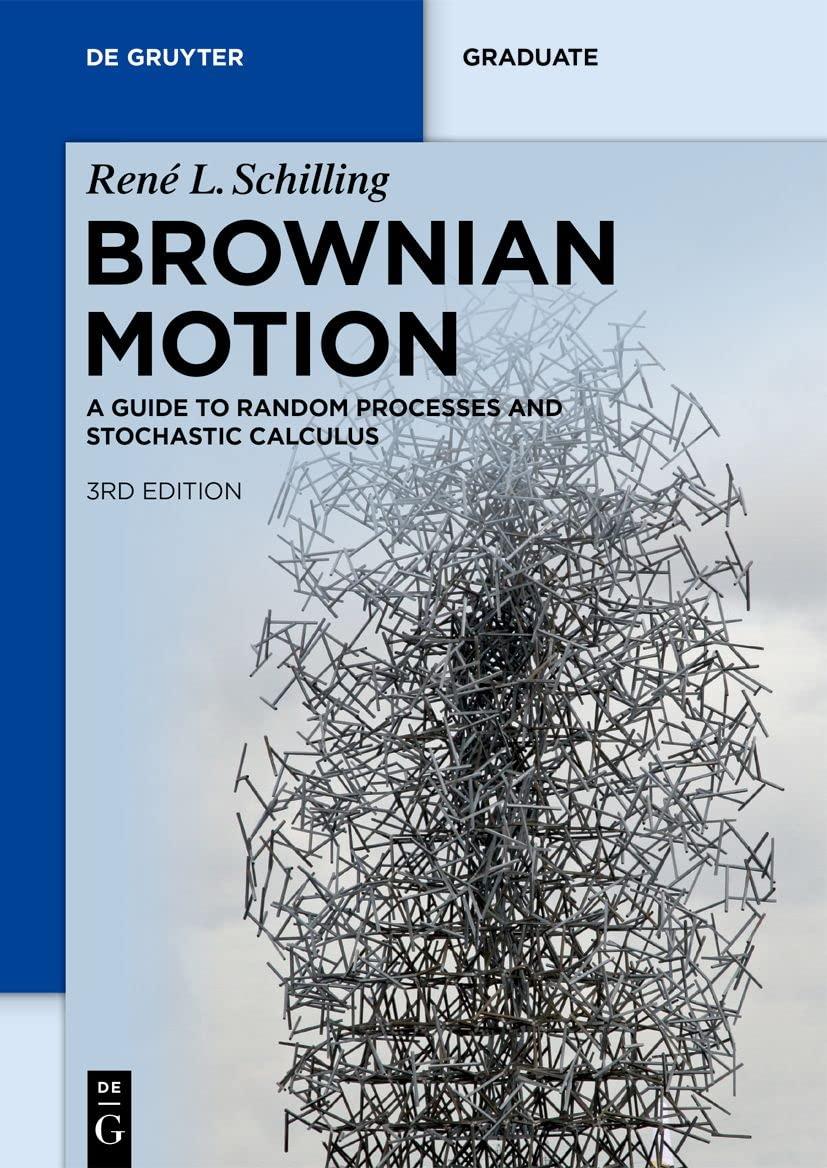Complete the following alternative argument for Example 7.16. Assume that (left(u_{n} ight)_{n geqslant 1} subset mathcal{C}_{infty}^{2}(mathbb{R})) such
Question:
Complete the following alternative argument for Example 7.16. Assume that \(\left(u_{n}\right)_{n \geqslant 1} \subset \mathcal{C}_{\infty}^{2}(\mathbb{R})\) such that \(\left(\frac{1}{2} u_{n}^{\prime \prime}\right)_{n \geqslant 1}\) is a Cauchy sequence in \(\mathcal{C}_{\infty}\) and that \(u_{n}\) converges uniformly to \(u\).
a) Show that \(u_{n}(x)-u_{n}(0)-x u_{n}^{\prime}(0)=\int_{0}^{x} \int_{0}^{y} u_{n}^{\prime \prime}(z) d z d y \rightarrow \int_{0}^{x} \int_{0}^{y} 2 g(z) d z d y\) uniformly. Conclude that \(c^{\prime}:=\lim _{n \rightarrow \infty} u_{n}^{\prime}(0)\) exists.
b) Show that \(u_{n}^{\prime}(x)-u_{n}^{\prime}(0) \rightarrow \int_{0}^{x} 2 g(z) d z\) uniformly. Deduce from this and part a) that \(u_{n}^{\prime}(x)\) converges uniformly to \(\int_{0}^{x} 2 g(z) d z+c^{\prime}\) where \(c^{\prime}=\int_{-\infty}^{0} 2 g(z) d z\).
c) Use a) and b) to show that \(u_{n}(x)-u_{n}(0) \rightarrow \int_{0}^{x} \int_{-\infty}^{y} 2 g(z) d z\) uniformly and argue that \(u_{n}(x)\) has the uniform limit \(\int_{-\infty}^{x} \int_{-\infty}^{y} 2 g(z) d z d y\).
Data From 7.16 Example

Step by Step Answer:

Brownian Motion A Guide To Random Processes And Stochastic Calculus De Gruyter Textbook
ISBN: 9783110741254
3rd Edition
Authors: René L. Schilling, Björn Böttcher





